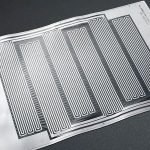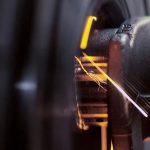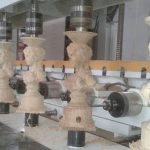Metal CNC Spinning is a precision manufacturing process used to produce symmetrical, hollow metal parts. This technique leverages Computer Numerical Control (CNC) technology to enhance the accuracy, efficiency, and complexity of metal spinning. The process involves forming a metal disc or sheet into a desired shape using a spinning tool, which is rotated at high speeds while being shaped against a mandrel. CNC technology controls the movement of the tool and mandrel, ensuring precise and consistent results.
Advantages of Metal CNC Spinning
- Precision and Consistency: CNC spinning provides exceptional precision in metal forming. The integration of computer-controlled machinery allows for meticulous adjustments and repeatability. This ensures that each part produced adheres to the exact specifications and tolerances required, reducing variability and minimizing the need for post-production adjustments.
- Complex Geometries: The CNC spinning process enables the creation of intricate and complex geometries that may be challenging or cost-prohibitive with traditional methods. The ability to control the spinning tool with high precision allows for the production of parts with varying wall thicknesses, complex curves, and detailed patterns.
- Material Efficiency: Metal CNC spinning is known for its material efficiency. The process often results in less material waste compared to other methods such as casting or machining from solid blocks. Since the metal is stretched and shaped rather than cut away, more of the original material is utilized, leading to cost savings and reduced environmental impact.
- Enhanced Surface Finish: The spinning process imparts a smooth surface finish to the metal part. The continuous deformation of the metal during spinning helps to eliminate surface irregularities, resulting in a high-quality finish. This is particularly advantageous for applications where aesthetics and surface quality are important.
- Reduced Tooling Costs: Compared to other manufacturing techniques, CNC spinning typically requires less expensive tooling. The simplicity of the mandrel and spinning tool reduces initial setup costs, making it a cost-effective option for both short-run and high-volume production. Additionally, the tooling used in CNC spinning is often more durable, leading to longer tool life and reduced maintenance costs.
- Flexibility and Customization: CNC technology offers significant flexibility in the design and customization of metal parts. Changes to the design can be easily implemented by reprogramming the CNC system, allowing for rapid prototyping and adjustments without the need for extensive retooling. This adaptability makes CNC spinning an ideal choice for producing custom parts and one-off designs.
- Strength and Durability: Metal CNC spinning can enhance the mechanical properties of the finished part. The process induces a strain-hardening effect, which can improve the strength and durability of the material. This is particularly beneficial for components subjected to high-stress environments or demanding operational conditions.
- Reduced Lead Times: The efficiency of CNC spinning contributes to shorter lead times in manufacturing. The automated nature of the CNC process allows for faster production cycles and quicker turnaround times. This is advantageous for industries that require rapid production and delivery of metal components.
- Versatility of Materials: CNC spinning is compatible with a wide range of metals, including aluminum, steel, copper, and titanium. This versatility makes it suitable for various applications across different industries, such as aerospace, automotive, and consumer goods. The ability to work with diverse materials allows manufacturers to select the optimal metal for each specific application.
Applications of Metal CNC Spinning
Metal CNC spinning is employed in various industries and applications due to its numerous advantages. Some common uses include:
- Automotive Parts: Components such as wheel rims, exhaust tips, and reflectors benefit from the precision and efficiency of CNC spinning.
- Aerospace Components: Parts like engine housings and structural components are produced using CNC spinning for their high strength and durability.
- Consumer Goods: Decorative elements, cookware, and lighting fixtures often utilize CNC spinning for their aesthetic appeal and functional requirements.
- Industrial Equipment: CNC spinning is used to manufacture components such as housings, casings, and machine parts that require robust construction and precise dimensions.
In conclusion, metal CNC spinning offers numerous advantages in terms of precision, material efficiency, surface finish, and cost-effectiveness. Its ability to produce complex geometries, reduce tooling costs, and accommodate various materials makes it a valuable manufacturing technique in modern industry. As technology continues to advance, the role of CNC spinning in producing high-quality metal spun components is likely to expand, further enhancing its relevance and application across diverse sectors.






